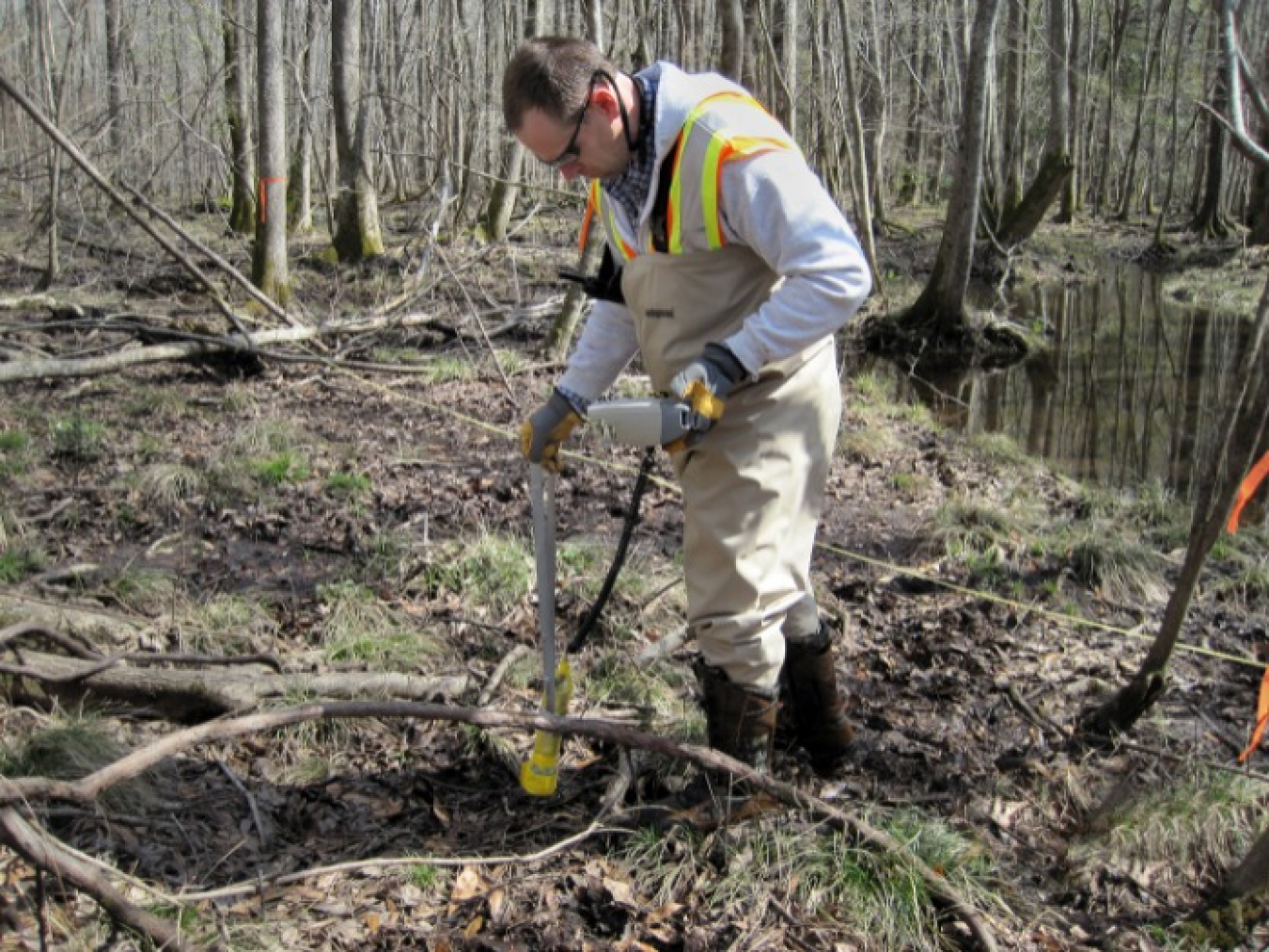
AIKEN, S.C. – EM and its cleanup contractor at the Savannah River Site (SRS) have reached an important agreement with South Carolina and federal environmental regulators on the final cleanup of a 25-mile-long stream corridor at the site.
The corridor consists of Par Pond, nine miles of canals adjacent to the pond and a stream named Lower Three Runs. The stream begins near the center of the site, just above Par Pond, and winds its way southward across SRS.
The record of decision (ROD) agreement specifies what protective and cleanup actions are required, along with assurances of long-term monitoring to ensure the corridor remains within environmentally safe standards. The ROD acknowledges the successful completion of a comprehensive cleanup strategy following the decommissioning and closure of both P and R areas at the site. Operations involving P and R reactor facilities had contributed to the contamination of the Lower Three Runs stream corridor.
“This is the first record of decision that we’ve ever agreed upon with the regulators and the public that outlines the final closure for a large parcel of stream systems,” said Chris Bergren, director of environmental cleanup and area closure projects for Savannah River Nuclear Solutions (SRNS), a site cleanup contractor. “We’ve accomplished much of the cleanup related to this part of the site over the years, and now we have determined the remaining actions necessary to achieve final cleanup.”
SRNS Engineer and Project Technical Lead Jim Kupar explained that much of the remaining work involves ensuring additional fencing and signage are in place to warn site workers and the public that potential hazards may be present.
“Though it is illegal for the public to cross the fencing onto SRS, our first priority is always their safety,” Kupar said.
Kupar said that surveying 25 miles of waterways, especially Lower Three Runs, was often challenging and sometimes potentially hazardous within the forest.
“We used aerial detection equipment along with taking onsite readings every 1,000 meters along Lower Three Runs, often involving difficult terrain,” he said. “Tripping hazards, feral hogs, snakes, spiders and bees could appear at any time. Though the survey is complete and active controls are now in place, we continue to conduct inspections along the stream corridor.”
Bergren said that everything from characterization of potential contamination through final negotiations with regulators was important to reach the record of decision.
"It’s a big deal," Bergren said. "We want to be sure that the public is confident that we’ve fully taken care of the Cold War legacy issue.”
DOE-Savannah River Deputy Site Manager Thomas Johnson Jr. said the cleanup of surface water and groundwater at SRS is one of the site's most important missions.
“The list of significant environmental remediation achievements at SRS, over just the last 10 years alone, is long and impressive," Johnson said. "It serves as a testament to the effectiveness of our relationship with regulators and our mutual commitment to continuous improvement and safety.”
To receive the latest news and updates about the Office of Environmental Management, submit your e-mail address.
